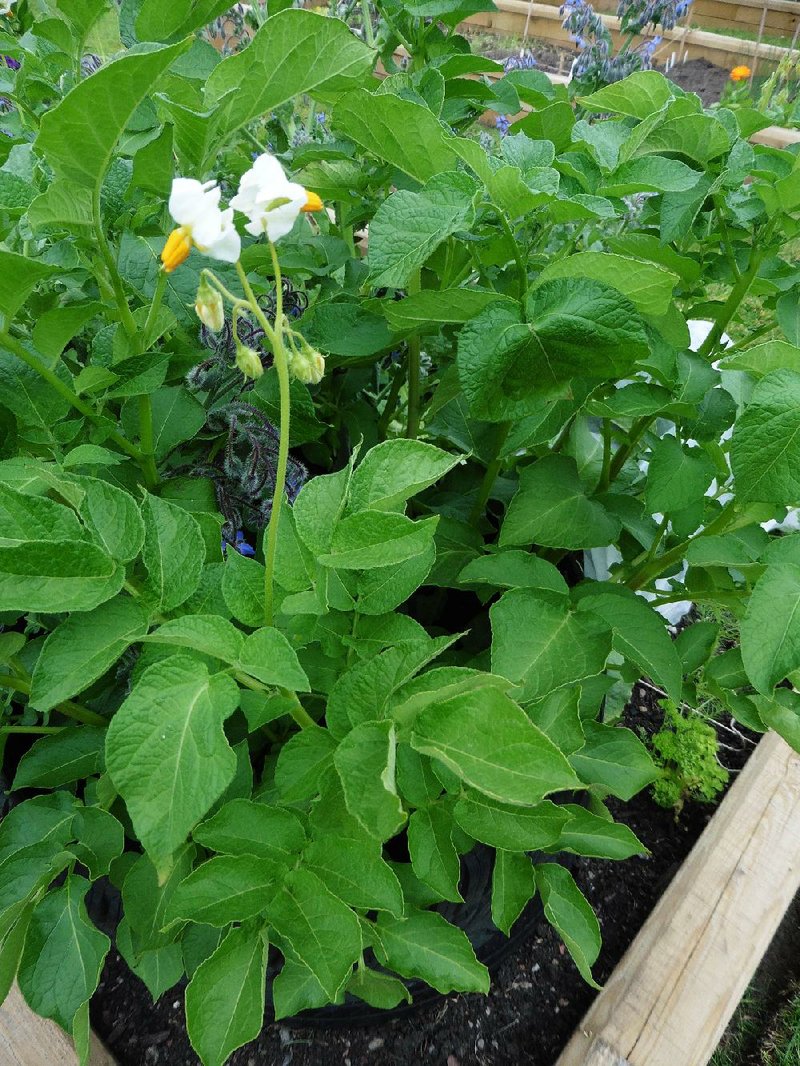MAY
The saying "April showers bring May flowers" could be true this year. We had our fair share of rain. It has been a glorious spring with minimal winter damage.
May typically gives us our first taste of hot weather, and gardens kick into high gear.
• Many gardeners are finding that petunias, calibrachoa and verbena overwintered successfully and have been blooming for a month or more. That is not something we can reliably expect every year, so enjoy it.
• If you haven't pulled your cool-season annuals, it is time to begin adding summer color. Good choices for sunny spots include Angelonia, Pentas, lantana, periwinkle, petunias and zinnias. For shade, consider begonias, impatiens, torenia and coleus. Some coleus can take full sun to deep shade.
• Make sure you know the mature size of your annuals, so you can plant them with the room they need to flourish.
• Annual flowers are typically with us for one season. While they are in the garden we want nonstop color. To make that happen, you need to fertilize regularly. Whether you use a granular or a water-soluble fertilizer, the key is to use something. Make sure you fertilize often -- but lightly. Too much fertilizer at one time can damage the plants.
• Harvest of cool-season vegetables is in full swing, and those who planted early warm-season crops will soon be getting squash, green beans and peppers.
• There is still time to plant summer vegetables, including the standard tomatoes, peppers, eggplant and squash. And now
that the soil is warming up, consider planting sweet potatoes, okra, southern peas and winter squash. Some of these plants take up a lot of space in the garden, so give them room to grow.
• Vegetables produce best when fertilized routinely. Avoid too much fertilizer around the legumes -- the beans and peas -- but the other vegetables will benefit from regular nutrition and even-handed watering. Mulching preserves moisture and keeps weeds at bay.
• Most of our warm-season grasses are totally green, and weekly mowing is in order. Now would be a great time to fertilize your lawn. Most lawn grasses do fine with one application of fertilizer a year. While Bermuda grass will respond favorably to more frequent applications, you could find yourself mowing more than you want to.
• Spring-flowering shrubs were glorious, but most have finished blooming. Now is the time to fertilize them, and if needed, do some pruning. Try to get all spring-blooming shrubs, vines and trees pruned by the middle of June so they have time to recover before they begin to make flower buds for next year.
• Most trees and shrubs need only one application of fertilizer per year.
• Perennial plants come back for more than one year. Some bloom for two weeks, others for four or more months. Many of our popular perennials are opening now, including baptisia, hardy geraniums, coreopsis, hardy orchid, daylilies ... and I have even seen some early Echinacea or purple coneflower. If you have long-blooming plants, deadheading to remove the spent flowers will keep them flowering even longer. Some perennials are heavy feeders and appreciate fertilization, while others thrive on neglect. Typically, though, we don't need to fertilize perennials frequently. Water requirements vary as well.
PLANT OF THE MONTH
Potatoes have an interesting history, are popular foods, and they are easy to grow.
The potato, Solanum tuberosum, is the world's fourth largest food crop, after rice, wheat and maize. The Inca Indians in Peru grew potatoes from 8000 to 5000 B.C. European explorers took Peru's potato back home to Europe.
In 1589, Sir Walter Raleigh introduced potatoes to Ireland, where they became a staple crop. A potato blight that swept Europe in the 1840s caused widespread famine in Ireland. Almost 1 million people died from starvation or disease, and another million left Ireland, mostly for Canada and the United States.
Potatoes are typically planted from a small potato with eyes called a seed potato. Most garden centers sell them from February to April.
There are many potato varieties, with red, yellow and blue forms. They can be planted in late winter for an early summer harvest, or planted in late summer for a fall harvest. Seed potatoes can be hard to find for fall planting.
The seed potatoes are planted 3-5 inches deep and 18-24 inches apart in a well-drained soil in full sun. As the tubers form, keep them covered with soil.
Potatoes require good soil moisture when the foliage is actively growing. An uneven water supply can cause knobs or cracks on the tubers. As the vines begin to yellow at the end of the season, let the plants dry out a bit. Potatoes can rot if the ground stays wet.
If you plan to eat your crop quickly, you can harvest it as the vines die back. But if you have planted a lot and want to store your potatoes, wait two weeks after the vines die before you harvest. Small new potatoes can be harvested whenever they are large enough to eat, but must be used fairly quickly.
The main insect problem is the Colorado potato beetle. This hard-shelled beetle is yellow with black stripes. It can wreak havoc on the plants. The adults lay eggs on the plants, and the pinkish larvae can defoliate them quite quickly.
While there are a lot of diseases associated with potatoes, we don't usually have too many in the home garden.
A scaly appearance on the outer skin of the potato, called scab, is usually associated with soils with a high pH. (Avoid using lime around potato plants.) While this condition isn't appetizing, it doesn't affect the quality of the inside of the potato.
Rotate where you plant potatoes each year to reduce disease issues.
Janet B. Carson is a horticulture specialist for the University of Arkansas Cooperative Extension Service.
HomeStyle on 04/30/2016

